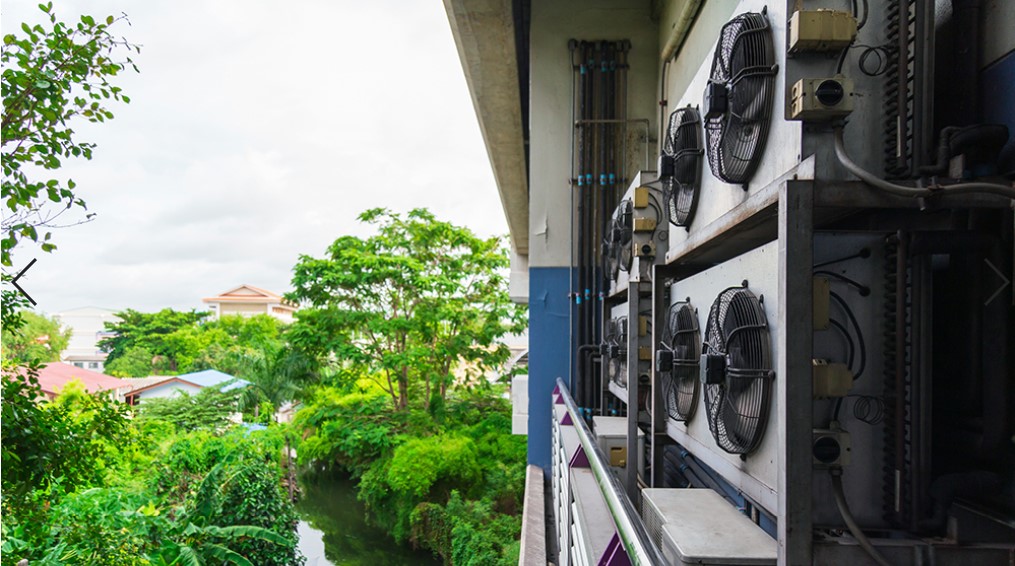
The Impact of Climate Change on HVAC Design and Performance
HVAC systems are responsible for a lot of the energy consumption and greenhouse gas emissions in the US and worldwide; however, innovative technologies may help lessen their climate impact.
Studies have predicted climate change will increase cooling energy use by 27% to 47% and peak cooling demand by 28% to 59% for commercial buildings across the four most populous Koppen-Geiger climates.
This research explores the impacts of future typical and extreme weather data (known as “morphing”) into Building Performance Simulation to future-proof HVAC system design and sizing to prepare for such changes.
For helpful guidelines on optimizing HVAC systems amidst changing conditions, check out the Inflation Reduction Act recommendations at River Valley Air Conditioning Inc. Stop by their office at 5107 AZ-95, Fort Mohave, AZ 86426 or call the team at +1 928-768-2122 for more information.
High energy consumption
Finding strategies to reduce energy usage has become more crucial for business and residential owners as a result of climate change. HVAC systems make up a large percentage of energy use within homes and commercial buildings; improving their efficiency could help lower greenhouse gas emissions.
HVAC systems consume considerable electricity; Americans typically lose as much as 30% of their overhead costs through lost energy costs.
There are various simple strategies for increasing HVAC equipment’s efficiency, such as proper installation, regular maintenance and the use of programmable thermostats; additionally, installing energy-efficient appliances, upgrading to double-paned windows or eliminating duct leakage can further boost HVAC’s effectiveness.
HVAC systems usually operate at maximum capacity most of the time since load estimations usually take into account the coldest and hottest days of the year. Value-priced split-ductless systems tend to overshoot this capacity with poor turndown ratios, leading to short cycling.
Changed weather patterns require HVAC designers to account for warmer conditions when designing HVAC equipment and anticipate its impacts on its operation, something not all engineers possess the time or resources for.

Inefficient use of resources
Building owners and operators often overlook HVAC systems until something goes wrong with them. Yet, HVAC units consume substantial amounts of energy and cost billions each year in operation in the US alone – this waste of resources significantly contributes to climate change.
Utilizing advanced technologies and strategies can help lower HVAC energy consumption. For instance, smart automation systems optimize energy usage for real-time monitoring and adjustments. Integrating renewable sources like solar panels or geothermal heating/cooling can further minimize operational costs and environmental impact.
Insulating and airtight building techniques can reduce energy losses while relieving strain on HVAC systems; this strategy can even lower energy consumption when combined with demand-controlled ventilation systems.
Integrating green technology into HVAC design and operations can increase efficiency and sustainability. For example, solar water heaters can substantially reduce reliance on fossil fuels, while leveraging natural cooling sources such as ocean water or waste heat can lower energy usage and reduce greenhouse gas emissions.
Despite the rapid rise in global temperatures, substantial cuts in greenhouse gas emissions can restrict this increase to two degrees Celsius by 2050 and onward.
This limitation aims to avoid crossing “tipping points” that could accelerate climate change and result in irreparable impacts on human societies and natural ecosystems worldwide.
More severe weather events
Climate change has increased weather and disaster events, creating frequent and intense natural catastrophes that disrupt food supplies, limit access to clean water sources, force people from one area into another and create breeding grounds for insect-borne diseases.
Humans have primarily contributed to climate change since the Industrial Revolution. This includes burning fossil fuels like coal, oil, and gas for energy and reducing snow cover to lower world temperatures. Such actions release greenhouse gasses like carbon dioxide (CO2) that act like blankets by trapping heat around Earth, warming its climate.
The water cycle is negatively impacted by warmer temperatures because they increase evaporation, make wetter places drier and wetter parts wetter, and increasing the possibility of both extreme rainfall events and drought conditions.
Scientists using National Oceanic and Atmospheric Association data have observed increased extreme weather events such as heat waves, floods, wildfires and storm surges over recent decades.
Scientists have linked these occurrences with climate change by examining historical records and using computer models to project future predictions.
Specifically comparing factors like temperature, air and sea levels, global precipitation patterns, land-use changes, long-term ocean circulation changes and reduction in global snow cover to determine whether they have occurred due to higher greenhouse gasses than preindustrial times.
Increasing cooling loads
As temperatures heat up, building cooling loads have increased significantly, and this strain on HVAC systems has put unnecessary strain on their resources.
To counteract this pressure, engineers should implement energy-efficiency measures that reduce heating and cooling costs, such as upgrading motors and fans in HVAC equipment as well as using LED lighting and low-energy refrigerators; additionally, insulating any ducts running outside the insulated building envelope to help limit heat gain will further decrease costs.
Occupants also generate heat through metabolism and perspiration, contributing to an increase in total load. This latent load can be significant when applied in large air-conditioned spaces such as auditoriums and gyms; its source varies based on occupancy density, but engineers can use accurate peak load calculations to ensure their HVAC system can meet this load adequately.
Many previous studies have sought to estimate the outcome of climate change on building heating and cooling energy consumption, yet most rely on statistical methods or detailed physical models that only simulate individual buildings.
To address this limitation, the GSA Sustainable Facilities Tool (SFTool) offers a holistic solution that utilizes statistical and physical modeling approaches to estimate energy requirements for buildings under different climate conditions accurately.




